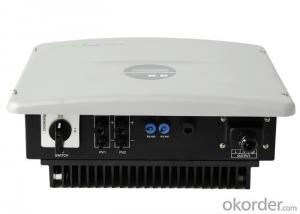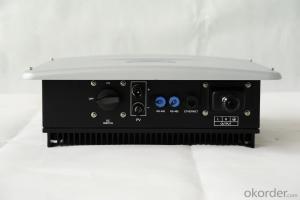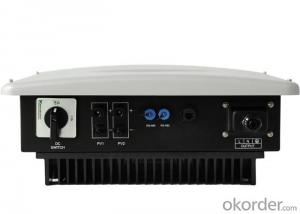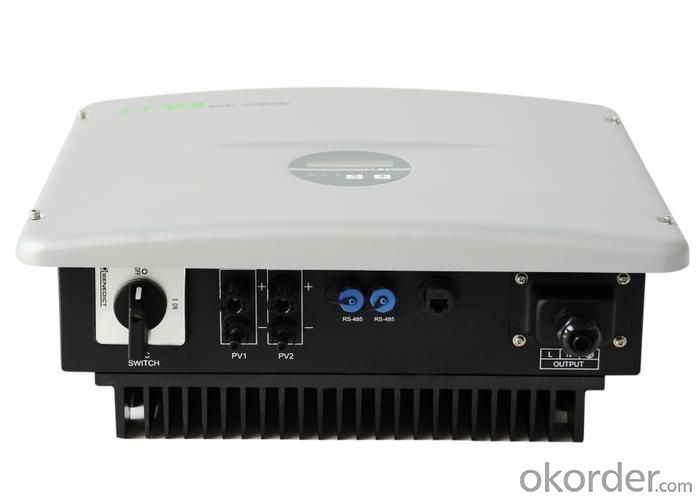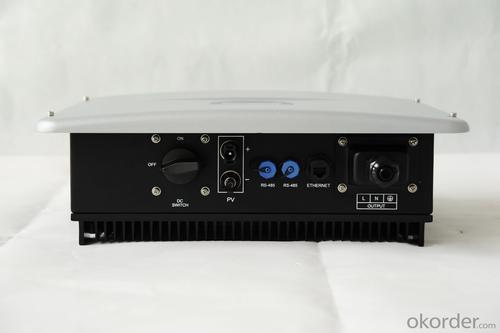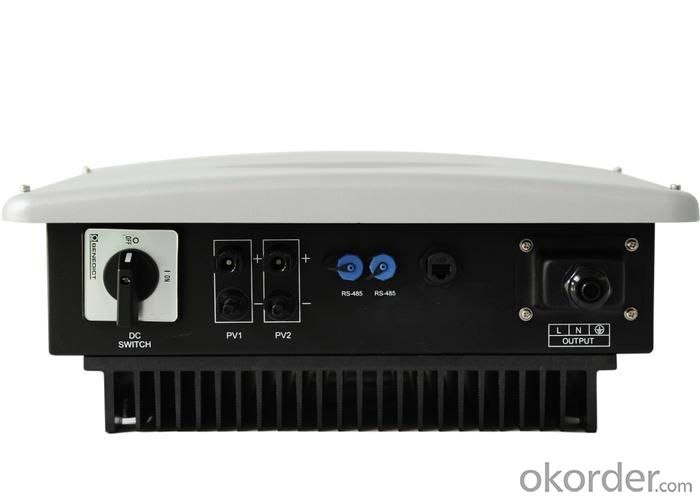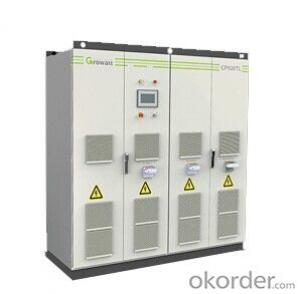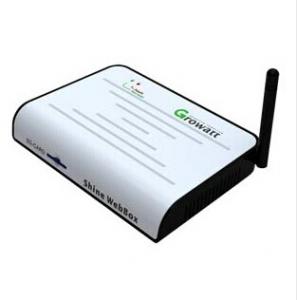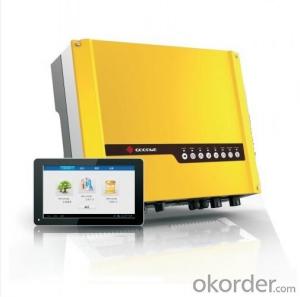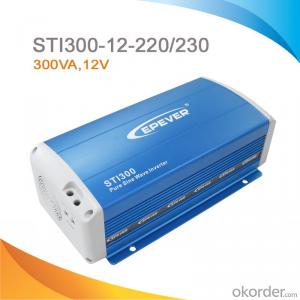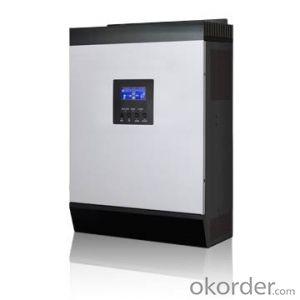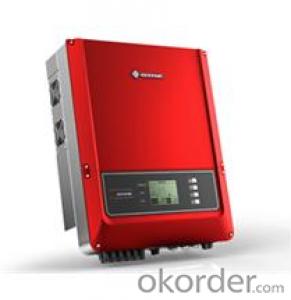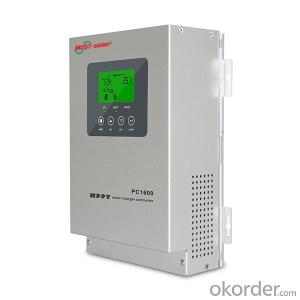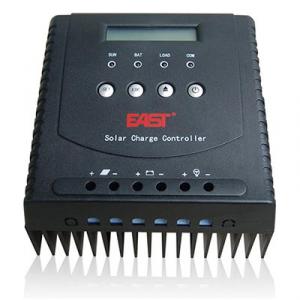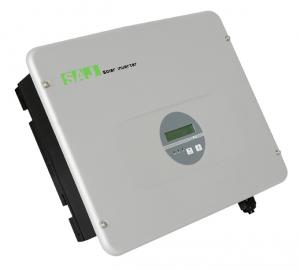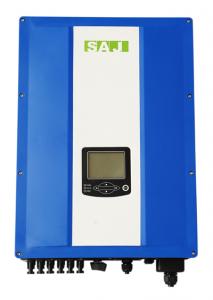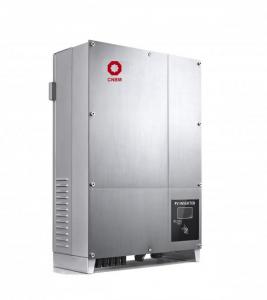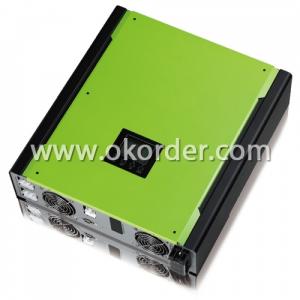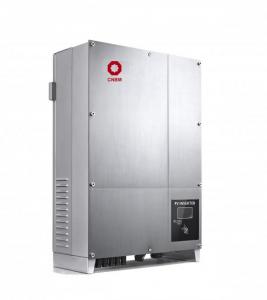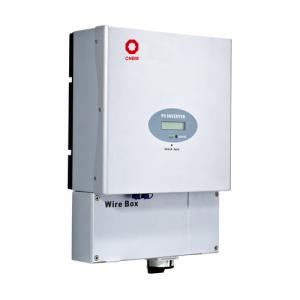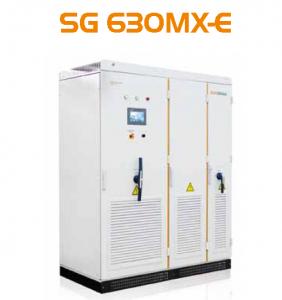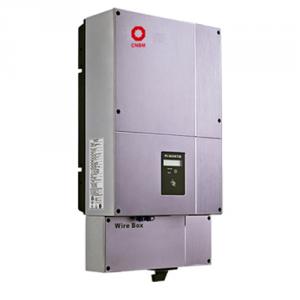Easun Solar Inverter Sununo-TL1K with 1MPPT Ongrid
- Loading Port:
- Guangzhou
- Payment Terms:
- TT OR LC
- Min Order Qty:
- 1 pc
- Supply Capability:
- 3000 pc/month
OKorder Service Pledge
OKorder Financial Service
You Might Also Like
The Sununo-TL1K/1.5K/2K solar inverter offers a range of benefits, including maximum energy harvesting,
through both its highspeed Maximum Power Point Tracker (MPPT) and transformerless technology.Combing the wide input voltage range makes the inverter suitable to low power installations with reduced string size.
The LCD display is to check real-time performance through its integrated data logger and more communication interfaces make it convenient for remote performance monitoring. The Sununo-TL1K/1.5K/2K is an ideal inverter for smaller residential PV plants.
Futures:
■Super junction MOSFET integrated with 97.4% Max. efficiency.
■ Wide MPPT voltage range and low minimum MPPT voltage for flexible configuration.
■ Transformerless design for lower cost and compact size.
■ IP65 and fan-less for longer-term reliability.
■ Ethernet/ Wi-Fi communication interface.
■ Integrated Web Server for local and internet monitoring.
■ Support SAJ Web Portal Monitoring Solutions.
Technical data:
| Model | Sununo-TL1K | Sununo-TL1.5K | Sununo-TL2K |
| Max. DC power [W] | 1200 | 1800 | 2300 |
| Max. DC voltage [V] | 480 | 480 | 480 |
| MPPT DC voltage Range [V] | 90-425 | 100-425 | 100-425 |
| Nominal DC voltage [V] | 360 | 360 | 360 |
| start voltage [V] | 100 | 150 | 150 |
| Min.DC voltage [V] | 80 | 100 | 100 |
| Max.DC input current [A] | 10 | 11 | 12 |
| Number of MPPT | 1 | 1 | 1 |
| string per MPPT | 1 | 1 | 1 |
| DC switch | optional | optional | optional |
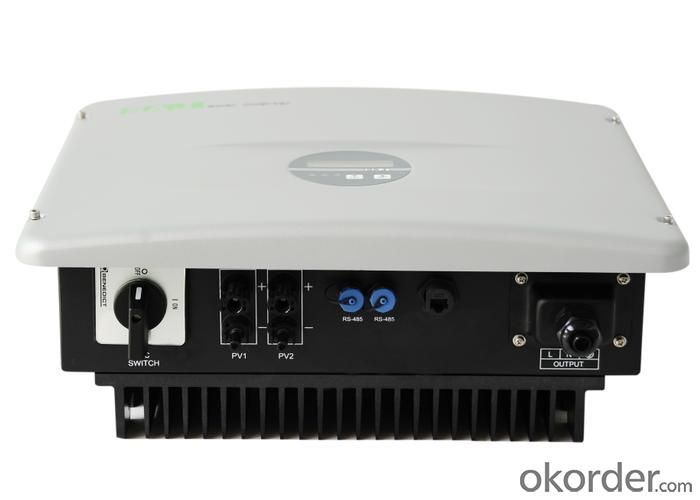
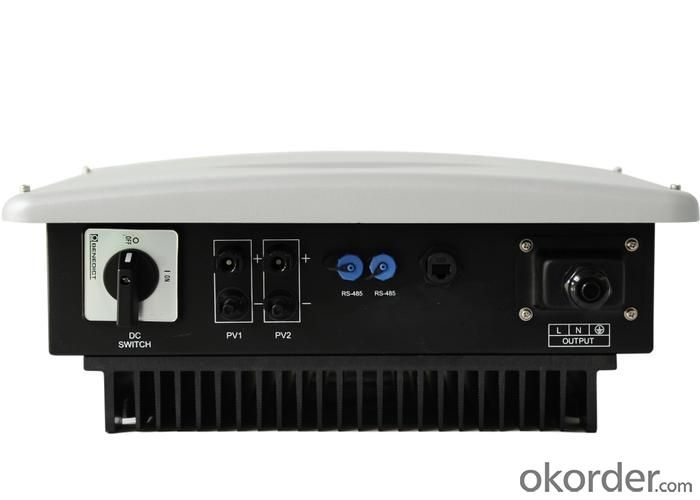
1. How long will my inquiry get response?
Your inquiry related to our products or prices will be replied within 24 hours.
2. Can I get professional service and suggestion?
Well-trained and experienced staffs to answer all your questions in fluent English.
3. Do you accept OEM or customized design?
OEM & ODM, any your customized lightings we can help you to design and put into product.
4. What if I need specific design?
Distributorship are offered for your unique design and some our current models.
- Q: What is the importance of surge protection in a solar inverter?
- There are several reasons why surge protection is extremely important in a solar inverter. Firstly, solar inverters have the responsibility of converting the direct current (DC) generated by solar panels into alternating current (AC) that can be used to power electrical devices. This conversion process can potentially cause power surges or voltage spikes. If these surges occur, they can harm the sensitive electronic components inside the inverter, resulting in malfunctions or even complete failure. Secondly, solar inverters are often connected to the electrical grid, which allows excess electricity produced by the solar panels to be sent back into the grid. However, the grid is susceptible to power fluctuations and surges caused by lightning strikes, utility switching, or other external factors. Without sufficient surge protection, these power surges can travel back through the grid and cause damage to the solar inverter. Furthermore, surge protection is crucial for safeguarding the entire solar power system. Apart from the solar inverter, there are other interconnected components like charge controllers, battery systems, and monitoring equipment. Any surge occurring in any part of the system has the potential to damage or disrupt the operation of the entire system. By incorporating surge protection devices like surge suppressors or surge arresters into the solar inverter, excess energy from power surges is diverted away from the sensitive electronic components. These devices are specifically designed to absorb or redirect the surge, thereby shielding the inverter and other connected equipment. In conclusion, surge protection is of utmost importance in a solar inverter as it prevents damage from power surges during the conversion process, provides protection against external power fluctuations from the grid, and safeguards the entire solar power system. Investing in proper surge protection ensures the long-lasting and reliable functioning of the solar inverter, minimizing the risk of expensive repairs or replacements.
- Q: Can a solar inverter be used with solar-powered water pumps?
- Yes, a solar inverter can be used with solar-powered water pumps. A solar inverter helps convert the DC power generated by solar panels into AC power, which is required to operate most water pumps. This enables the solar panels to generate electricity, which is then converted by the inverter to power the water pump, making it feasible to use solar energy to operate water pumps.
- Q: What are the key factors affecting the warranty coverage of a solar inverter?
- The key factors affecting the warranty coverage of a solar inverter include the length of the warranty period, the terms and conditions outlined in the warranty document, the reputation and financial stability of the manufacturer, the quality and reliability of the inverter components, and any limitations or exclusions stated in the warranty.
- Q: What is the role of a synchronization circuit in a solar inverter?
- The role of a synchronization circuit in a solar inverter is to ensure that the inverter's output voltage and frequency are synchronized with the utility grid. This is important for two reasons. Firstly, it allows the solar inverter to safely connect and disconnect from the grid, ensuring smooth and seamless operation. Secondly, it enables the solar inverter to inject electricity generated from solar panels into the grid at the correct voltage and frequency, making it compatible with other electrical devices and systems connected to the grid.
- Q: Can a solar inverter be used in areas with high levels of dust or pollution?
- Yes, a solar inverter can be used in areas with high levels of dust or pollution. However, it is important to regularly clean and maintain the inverter to ensure its optimal performance. Dust and pollution can potentially accumulate on the inverter's surface, affecting its efficiency and lifespan. Regular cleaning and maintenance will help mitigate any issues and ensure the inverter continues to function effectively.
- Q: How does a solar inverter handle low light conditions or cloudy days?
- A solar inverter handles low light conditions or cloudy days by adjusting its power output to match the available sunlight. It is designed to maximize the energy conversion efficiency even in low light situations, allowing for continuous power generation from the solar panels.
- Q: Can a solar inverter be used in areas with high seismic activity?
- Yes, a solar inverter can be used in areas with high seismic activity. However, it is important to ensure that the solar inverter is designed to withstand and operate safely under such conditions. Solar inverters are typically built with robust and durable materials to be able to withstand various environmental factors, including seismic activity. They are often tested and certified to meet specific standards for seismic resistance. When installing a solar inverter in an area with high seismic activity, it is crucial to follow the manufacturer's guidelines and recommendations. This may involve using additional measures such as reinforced mounting structures, flexible connections, and proper grounding techniques to enhance the stability and resilience of the inverter system. Moreover, regular maintenance and inspections should be conducted to ensure that the solar inverter remains in good working condition even after seismic events. This includes checking for any signs of damage, loose connections, or other potential issues that may have been caused by seismic activity. By taking appropriate precautions and using seismic-resistant solar inverters, it is possible to safely and effectively harness solar energy even in areas prone to seismic activity.
- Q: Can a solar inverter be used in systems with different module currents?
- Yes, a solar inverter can be used in systems with different module currents. Solar inverters are designed to convert the DC power generated by solar panels (modules) into AC power that can be used by electrical devices. They are typically equipped with Maximum Power Point Tracking (MPPT) technology, which allows them to optimize the power output from the solar panels regardless of their current ratings. This means that solar inverters can efficiently handle systems with different module currents and ensure the maximum power generation from the solar panels.
- Q: Can a solar inverter be used with a net metering system?
- Yes, a solar inverter can be used with a net metering system. In fact, a solar inverter is an essential component of a net metering system. It converts the direct current (DC) electricity generated by the solar panels into alternating current (AC) electricity that can be used to power the home or business. The excess electricity produced by the solar panels is fed back into the grid through the net meter, allowing the utility company to credit the owner for the excess energy produced.
- Q: What is the role of a solar inverter in a solar-powered desalination system?
- The role of a solar inverter in a solar-powered desalination system is to convert the direct current (DC) electricity generated by the solar panels into alternating current (AC) electricity that can be used to power the desalination process. The inverter ensures that the energy produced by the solar panels is compatible with the desalination system, allowing it to operate efficiently and effectively.
Send your message to us
Easun Solar Inverter Sununo-TL1K with 1MPPT Ongrid
- Loading Port:
- Guangzhou
- Payment Terms:
- TT OR LC
- Min Order Qty:
- 1 pc
- Supply Capability:
- 3000 pc/month
OKorder Service Pledge
OKorder Financial Service
Similar products
Hot products
Hot Searches
Related keywords
